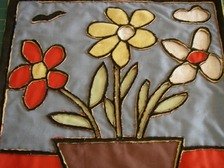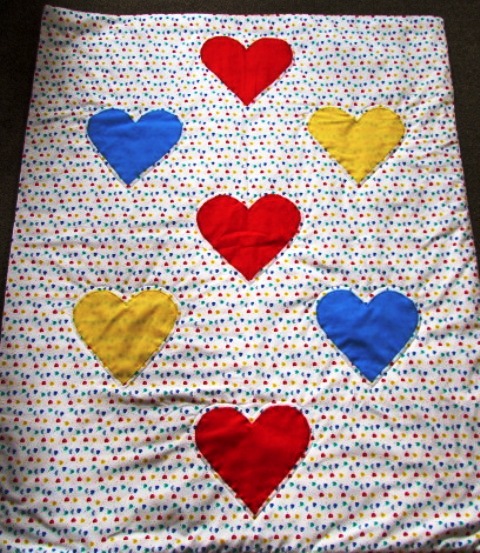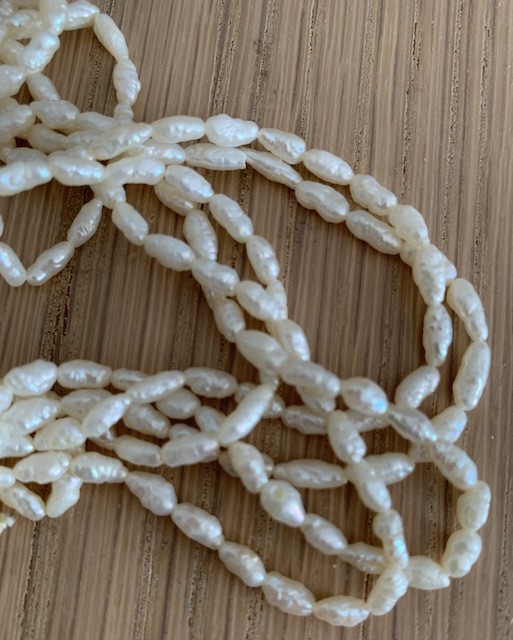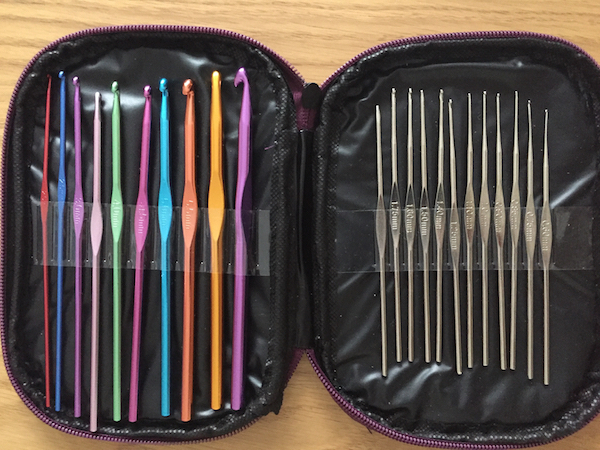Applique Techniques
Applique techniques are used when some additional fabric is "applied to" or " laid on" another material this can be in metalwork or needlework. It is usually associated with needlework.
The word appliqué comes from French and latin verbs meaning "to attach".
This type of sewing is very different from patchwork.
The end result is not a new piece of fabric made up of oddments of
other pieces but different shapes and pictures sewn onto a bottom layer
of fabric either by hand or machine.
Originally appliqué sewing or embroidery started as a need to repair worn household or clothing items such as putting a patch on tent or trouser holes, but it has now turned into an art form in itself.
Long ago fabric was very hard to come by and when it was available, very expensive. So items were made to last by adding or attaching extra fabric to give the original item some strength and stability.
In Britain in the Eighteenth Century this technique was used to preserve delicate and expensive fabric, like the Indian tree of life design, and in turn make new covers for beds or walls.
Different kinds of ways in which this type of decoration is used can be seen in different areas of the world.
In 1965 to celebrate 900 years since the battle of Hastings in 1966, the Royal School of Needlework was commissioned by Group Captain Richard Ward to make a modern day Bayeux Tapestry piece using hand appliqué. This took 22 embroiderers 10 months to complete.
Some applique techniques used and ways to apply.
Many countries use applique techniques for decorating cushions, bedspreads and door-hangings.
Some use a reverse form of appliqué on their clothes. This is where layers of material are then sewn with a pattern and then cut out to show the underneath colours.
Appliqué can also be used to make the American quilts, these were made by the early settlers to keep themselves warm and became more elaborate as they had more time to dedicate to this hobby.
Then in the 1930s when the depression came then this type of needlework went back to the original purpose of the need to repair worn items.
The blocks that use both patchwork and appliqué are Dresden Plate, (which looks like a flower with different coloured petals) and the Sun bonnet Sue block ( which is the side view of the girl wearing a dress and hat with the face obscured).
There are many ways in which to apply this type of decoration:
Traditional hand techniques - making pictures out of fabric. The edges of the pieces of fabric have their edges turned under as not to see any raw edges and then sewn with a straight stitch near to the edge or a satin stitch which overlaps the edges.
Sometimes the bits of fabric can be glued or stitched in place first for stability. Binding mesh can also be used as well.
Printed Fabric - Features from patterned fabric are cut out such as a flower, leave etc that is needed for the finished picture. Lost of feature from many different fabrics are used to make a new design.
Lace - Bits of different types of lace, and there are many different types, are cut and then re-assembled, mixing old and new lace to get the end design or picture.
What is the reverse applique technique?

Applique as stated before is the art of layering and attaching fabric onto a base fabric to make a picture or just adding decorations.
Reverse appliqué is where all the different coloured fabric that is going to be used in the picture are placed on top of each other and secured in place. The fabric with the design drawn on is at top.
Then each layer is cut away until the desired colour is showing for that part of the picture. This gives a form of depth to the fabric. The edges are then sewn down to secure the design.
In the picture shown above the top fabric with the design is the grey/blue. The colour at the bottom was white.
When learning how to appliqué, ribbons are a good starting point for making patterns as their edges are already finished. They come in many different colours, patterns and widths.
The pieces of ribbon can be held in place with fabric glue to stop it from moving when sewn with the machine.
Felt and leather are also good additions as their edges will not fray.
Once the basic steps have been mastered then wonderful creations can be made.
Many fabric outlets have a supply of small pieces of fabric to help in getting the look you want, not forgetting the books that are available in many shopping outlets like Amazon.
Enjoy trying out this craft as you will be encouraged by how well it looks.
- Home
- Sewing Crafts
- Applique Techniques
Affiliate offers
Please take care with any soft furnishing that it does not come into contact with any heat source.
If you have found an error on this page or want some more information on sewing cushions.
Please contact me . Thank you



New! Comments
Have your say about what you just read! Leave me a comment in the box below.